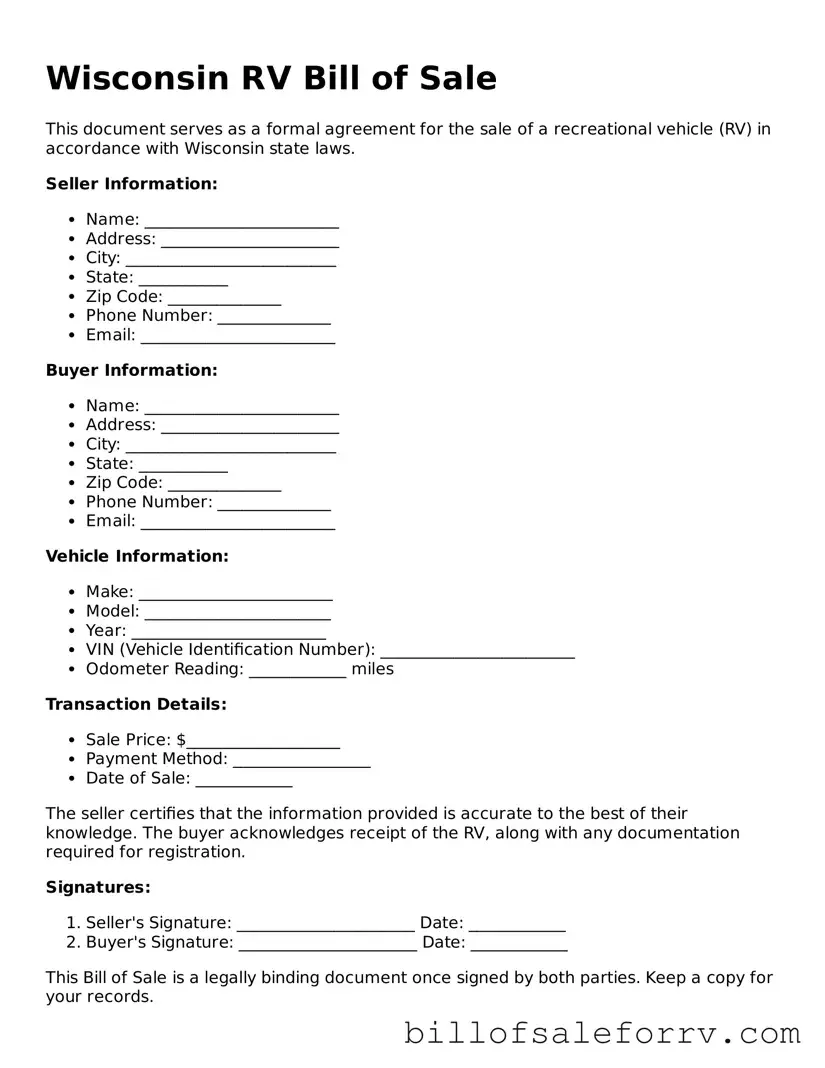Detailed Instructions for Writing Wisconsin RV Bill of Sale
Once you have the Wisconsin RV Bill of Sale form in hand, you can begin the process of completing it. This form is essential for documenting the sale of a recreational vehicle and provides necessary information for both the buyer and the seller. Follow these steps carefully to ensure that all required information is accurately filled out.
- Obtain the form: You can download the Wisconsin RV Bill of Sale from the official state website or request a physical copy from a local DMV office.
- Enter the date: Write the date of the sale at the top of the form. This establishes when the transaction took place.
- Provide seller information: Fill in the seller's name, address, and contact information. Ensure that this information is current and accurate.
- Provide buyer information: Enter the buyer's name, address, and contact information. Double-check for any spelling errors.
- Describe the RV: Include details such as the make, model, year, vehicle identification number (VIN), and any other relevant specifications.
- Indicate the sale price: Clearly state the amount for which the RV is being sold. This should reflect the agreed-upon price between the buyer and seller.
- Sign the form: Both the buyer and seller must sign the document. This signifies that both parties agree to the terms of the sale.
- Make copies: After completing the form, make copies for both the buyer and seller. This ensures that both parties have a record of the transaction.
With the form completed, the next step involves submitting it to the appropriate authorities if required, and ensuring that the buyer registers the RV in their name. This process will help finalize the sale and protect the interests of both parties involved.
